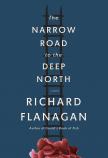The Death Railroad
The Pacific theater of World War II is often thought of as a forgotten war. But anyone who reads Richard Flanagan’s sixth novel, The Narrow Road to the Deep North, will not soon forget it.
Set in a Japanese prisoner of war camp, the story expertly blends fact and fiction as it brings to life a gut-wrenching and soul-changing experience. That is not an exaggeration, and this book is not for the faint of heart.
This novel, which won the 2014 Man Booker Prize, takes the perspective of Australian prisoners who are charged with building the Thai-Burma railway. The title alludes to a travel diary with a similar title by Matsuo Basho, published in 1702, which blends prose and poetry and is sometimes called Basho’s death poem. Flanagan calls Basho’s diary the high point of Japanese culture, as opposed to the Death Railroad—the low point.
The plot is loosely based on the memoir of Weary Dunlop, an Australian surgeon who survived the abhorrent conditions as a P.O.W. Dunlop was the voice of compassion and hope to the approximately 1,000 Australian P.O.W.’s. Among them was Flanagan’s father, prisoner #335, to whom Flanagan dedicates this novel, which, he said in an interview, took him 12 years to write.
Flanagan filters his novel with poetry, which appears on almost every page and floats into and out of the consciousness of several characters. There are so many literary allusions here—as well as smatterings of poetry and metaphor—that the story could also be called a death poem. Every section of the book begins with a haiku that contains in condensed form the contents of the chapters that follow. The poetry not only gives the story a universality, but also a dreamlike quality. This works well as Flanagan takes readers into the dreams Dorrigo Evans experiences during his last days.
Dorrigo Evans is a sergeant, surgeon and the story’s hero—of sorts. The novel moves from his boyhood in an Australian backwater town to his war years, middle age and old age, when he becomes a national hero, although he feels that he doesn’t deserve the accolades. The story ends with Dorrigo, in his late 70s, lying on his death bed. His life replays in frenzied bursts of memory, which can make the story seem incoherent and difficult to follow. The novel, like Flanagan’s first, Death of a River Guide, is a flashback or, as Flanagan calls it here, a death dream.
One significant moment occurs when Dorrigo falls passionately in love with Amy just before being called up to join his regiment. She, who wears the red flower on the book’s cover, which is referred to several times in the story, also happens to be his uncle’s much younger wife. Ridden with guilt but unable to contain his feelings, Dorrigo promises Amy that they will be reunited when the war ends. Whether and how this will happen becomes a subplot.
After Dorrigo is taken prisoner, finding Amy serves as his one hope amid what he calls the terrifying force of evil. Flanagan’s numerous allusions to this force give the novel the added resonance of a morality tale. On many levels, this book resembles Dante’s “Inferno.” Dorrigo even refers to Dante’s first circle. This evil force plays out in Dorrigo’s own life as he attempts to stand up for his men, even though he has not until this time had the courage to stand up for anything but his own selfish interests.
One also sees the force in the lives of the men he ministers to as their physician as well as those who brutalize Dorrigo and his troops. Colonel Kota, for example, has “no fear or conscience.” He feels himself to be in the power of “something demented, inhuman, that had left a trail of endings through Asia.” He kills casually, joyfully and brutally. Yet he has an immense love for poetry and recites haiku as he kills.
Another is Sergeant Nakamura, who murmurs a haiku by Basho as he instructs the guards to kick the helpless, emaciated body of an already dying prisoner. Although the Japanese are the villains, Flanagan balances his portrayal by showing the captors as victims of the same evil force. When the two soldiers return home, they become loving fathers and seem little connected to their past.
This “terrifying force,” Dorrigo writes, “takes hold of individuals, groups, nations, and bends and warps them against their natures, against their judgements, and destroys all before it with a careless fatalism.” One especially wrenching scene occurs as a prisoner is beaten nearly to death and, as Flanagan puts it in an clear reference to the passion of Christ, he “falls for the second time.”
The Aussie prisoners are ravaged by cholera, beri-beri, dysentery, tropical diseases, ulcers, gangrene and a starvation diet consisting of a daily serving of a rancid rice ball. They work 15-hour days trudging narrow paths that snake beside steep gorges. They carry shovels, axes, surveyors’ pegs, ties, spikes, rails and other equipment necessary to build the Burma Railroad, or, as history calls it, the Death Railroad.
Worse yet are the beatings. The slow, the sick, the starving—and anyone else within range—must be beaten into submission with guns, poles, whips, hands and any weapon available. Sometimes the men fall into churning mud of earth and excrement.
Ultimately, Flanagan’s prizewinning novel proves the adage that war is hell. But it takes the horror of that hell to unexpected depths.
This article also appeared in print, under the headline “The Death Railroad,” in the December 8-15, 2014, issue.








